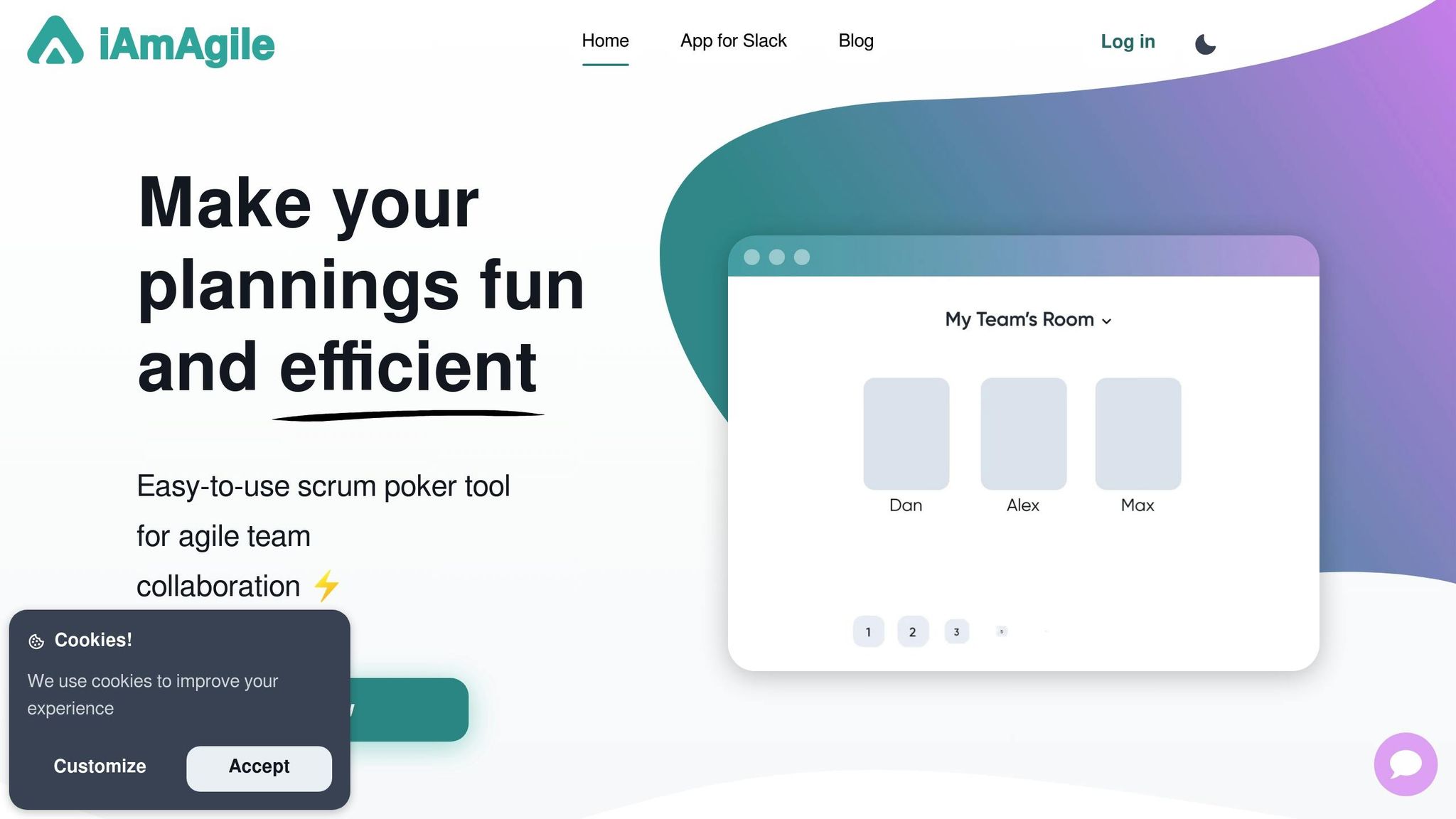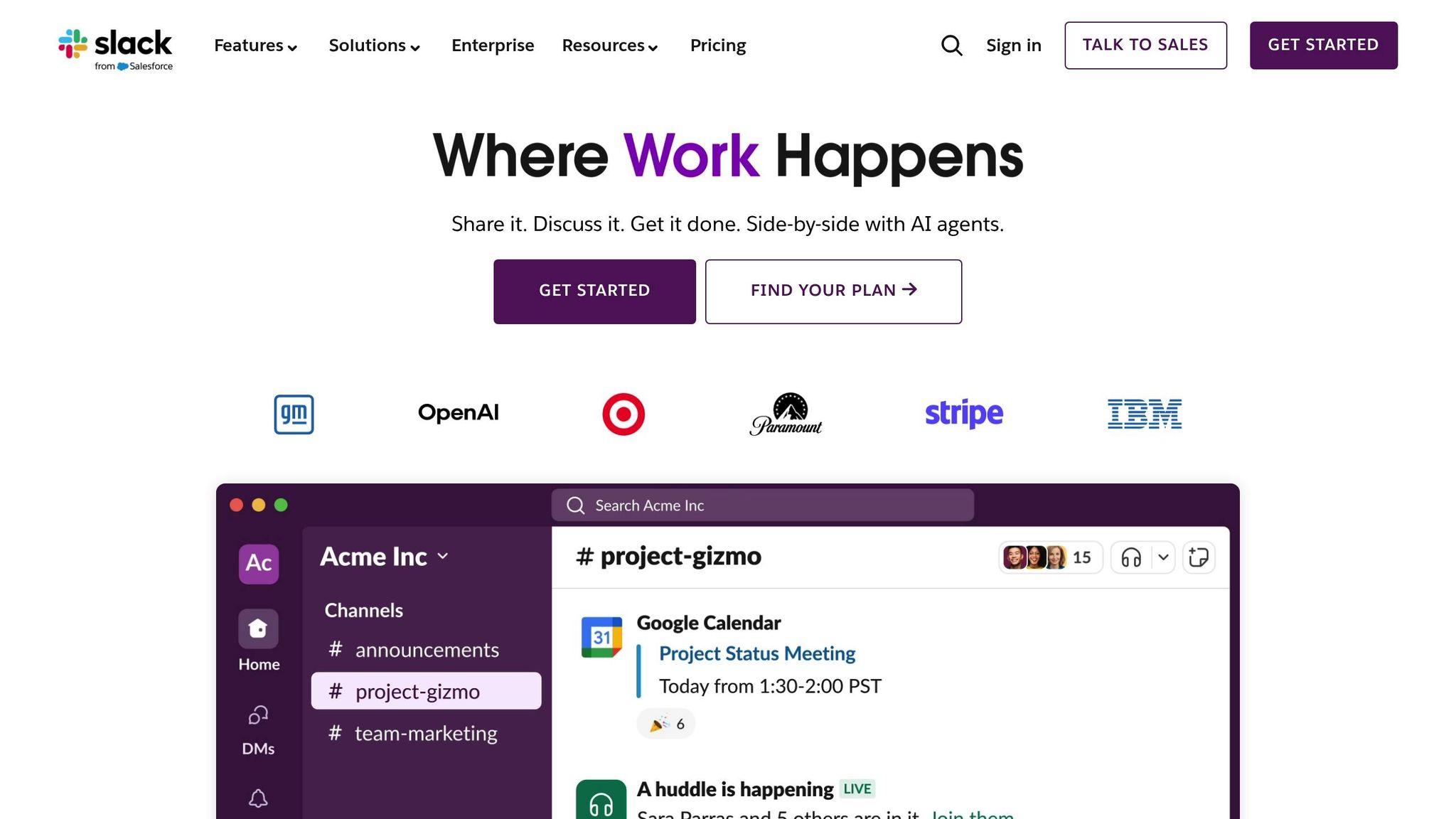Common Estimation Problems Solved with Historical Data
Published Nov 17, 2025
⦁
12 min read

Common Estimation Problems Solved with Historical Data
Accurate estimation in Scrum is essential for better sprint planning, resource allocation, and building trust with stakeholders. However, teams often face challenges like inconsistent velocity, overcommitment, and pressure to provide exact delivery dates. These issues can lead to missed deadlines, reduced quality, and low team morale.
The solution? Leverage historical data. By using metrics like velocity, cycle time, and throughput, teams can make evidence-based decisions, improve forecast accuracy, and set realistic goals. This approach minimizes guesswork, reduces overcommitment, and fosters better communication with stakeholders.
Key Takeaways:
- Inconsistent Velocity: Use rolling averages from past sprints to smooth out fluctuations and predict capacity.
- Overcommitment: Analyze historical metrics to set achievable sprint goals, avoiding burnout and missed deadlines.
- Pressure for Exact Dates: Educate stakeholders on agile's iterative nature and rely on historical trends for realistic forecasts.
- Improved Estimation Techniques: Tools like iAmAgile integrate past data into planning sessions, enhancing accuracy and collaboration.
Historical data provides actionable insights to refine estimation practices, ensuring teams deliver more predictably and maintain a sustainable pace.
Main Estimation Problems in Agile and Their Impact
Inconsistent Velocity and Story Point Estimates
One of the biggest hurdles for agile teams is dealing with inconsistent velocity from sprint to sprint. When velocity fluctuates, it becomes tough to forecast future performance or confidently plan release schedules.
The reasons behind these fluctuations often go beyond the team's control. For example, addressing this issue sometimes requires introducing earlier and more frequent testing to balance workloads more effectively.
Another common challenge lies in story point estimation. Teams often struggle because members interpret story points differently. Newer team members, for instance, might assign different values compared to seasoned members.
The complexity of tasks also plays a role. If a sprint includes too many simple tasks, it can create bottlenecks. On the flip side, grouping fewer but highly complex tasks can make code reviews much more demanding. Even when a team's capacity doesn’t change, these factors can disrupt their output.
When velocity swings unpredictably, stakeholders start losing faith in the team's ability to deliver consistently. This lack of trust often leads to micromanagement and demands for detailed upfront planning - practices that go against the core principles of agile. These variations in estimation and delivery pave the way for further problems, like overcommitment, which we’ll discuss next.
Overcommitment and Missed Deadlines
Overcommitment is a recurring issue in agile development, where teams take on more work than they can realistically handle. This sets them up for failure before the sprint even begins.
The root of this problem often lies in underestimating task complexity, overlooking dependencies, and failing to allocate enough time for code review and quality assurance. Add to this the pressure from management to meet aggressive timelines, and you have a recipe for overcommitment.
The fallout is significant. Teams that frequently overcommit rarely meet their sprint goals, which leads to frustration and burnout. Incomplete deliverables don’t just disrupt the current sprint - they can throw entire release cycles off track. And as teams rush to meet unrealistic deadlines, the quality of their work suffers. All of this adds to the growing pressure for exact delivery dates, creating a vicious cycle.
Pressure for Exact Delivery Dates
The demand for precise delivery dates is one of the most difficult tensions in agile development. Whether due to budget constraints, market demands, or a limited understanding of agile principles, stakeholders often push teams for exact timelines - despite the iterative nature of agile work.
This pressure leads teams to commit to fixed dates, even when past data shows how unpredictable these estimates can be. The issue becomes even more pronounced when estimating tasks further down the backlog. As requirements evolve and features change, story point estimates for backlog items become increasingly unreliable.
When teams give in to these demands, they lose the flexibility that makes agile so effective. Instead of focusing on innovation, teams become overly cautious, prioritizing deadlines over finding better solutions. This approach not only stifles creativity but also limits the team’s ability to adapt to changing priorities or discover improvements during development.
The real challenge lies in helping stakeholders understand why rigid deadlines are counterproductive. By educating them on how historical data can offer more realistic forecasts, teams can strike a balance - providing useful insights without sacrificing the adaptability that agile methodologies are built on.
Agile Estimation: Story Points, Effort, and Schedule
Benefits of Using Historical Data for Estimation
Relying on historical data takes the guesswork out of planning and replaces it with informed, data-driven decisions - something that directly addresses key challenges in Scrum. By basing estimates on past sprint metrics instead of subjective assumptions, teams can have more meaningful discussions about capacity and timelines. These metrics not only improve accuracy but also help identify areas for process improvement.
Using Velocity to Predict Team Performance
Velocity, which measures the average amount of work a team completes in previous sprints, is one of the most dependable tools for predicting future capacity. By tracking story points over multiple sprints, teams can establish a baseline that reflects their actual performance rather than an idealized version.
For example, one team aiming for 35 story points found their six-sprint average was closer to 25. This revealed that basing commitments on real averages leads to more realistic goals.
Instead of relying on data from just one sprint, it's better to use a rolling average from three to six sprints. This method accounts for natural variations and helps teams avoid overcommitting. Additionally, tracking velocity trends can uncover underlying issues like growing technical debt, changes within the team, or a more complex backlog. On the flip side, improvements in velocity may point to better collaboration or more efficient processes.
Using Cycle Time and Throughput Metrics
While velocity focuses on the amount of work completed, cycle time and throughput provide insights into workflow efficiency and predictability.
- Cycle time measures how long it takes for a work item to move from start to finish. For instance, if historical data shows that user stories typically take five days to complete, teams can use this information to set realistic delivery dates and adjust workloads as needed.
- Throughput tracks the number of work items completed in a specific time frame, regardless of size or complexity. This is especially useful when story point estimates vary or when stakeholders prefer to see a clear count of completed tasks.
Together, these metrics give a fuller picture of team capacity. Historical cycle time data, in particular, helps ensure that sprint commitments match what the team has consistently delivered in the past.
Finding Trends to Improve Estimates
Historical data becomes even more powerful when analyzed for patterns that can refine future planning and move teams toward proactive decision-making.
For example, recurring delays - like those in integration tasks - can be identified and accounted for in future plans. Trend analysis may also reveal external factors, such as seasonal workload shifts or budget cycles, that impact velocity. With this knowledge, teams can set more realistic timelines and communicate them clearly to stakeholders.
Additionally, tracking patterns like frequent scope changes or bottlenecks in areas like code reviews or testing can help teams anticipate challenges. This insight allows for the inclusion of appropriate buffers in sprint plans. By continuously analyzing trends, teams can refine their estimates over time, creating a cycle of ongoing improvement where each sprint's data either confirms existing patterns or highlights new ones to consider.
Practical Ways to Apply Historical Data
Leveraging historical data effectively can significantly improve estimation accuracy. To make the most of it, focus on consistent collection and routine analysis. Start by gathering detailed sprint data to create a strong foundation for meaningful insights.
Tracking and Reviewing Sprint Data
To build a dependable dataset, document sprint outcomes promptly and track key metrics like velocity, cycle time, and throughput. Beyond these basics, include details such as task complexity, dependencies, and external factors like team absences or technical issues. These additional data points provide a fuller picture of sprint performance.
Many teams use a "sprint notes" document to log notable events and their impacts. For instance, if velocity drops from 38 points to 22 points due to a production incident, recording that context ensures the data isn’t misinterpreted as a typical sprint outcome. This context becomes invaluable when forecasting future capacity.
During sprint retrospectives, dedicate 15–20 minutes to reviewing both metrics and observations. Ask questions like, "Did our velocity align with our forecast? If not, why?" or "Were there any dependencies that slowed us down?" Consistently analyzing this data over 6–8 sprints can uncover recurring issues and guide better estimation practices.
Visualizing Data for Better Insights
Turning raw data into visual formats makes it easier to identify trends and take action. For example:
- Velocity charts: These show story points completed over time, helping to spot trends or seasonal patterns.
- Scatter plots: Comparing estimated versus actual completion times can highlight whether estimation accuracy is improving.
- Cumulative flow diagrams (CFDs): These illustrate how work progresses through different stages. If tasks consistently bottleneck in the "In Review" stage, it signals a process issue that could be slowing overall velocity.
- Complexity distribution charts: These show the proportions of low-, medium-, and high-complexity tasks. For example, a sprint dominated by low-complexity tickets might have higher velocity but deliver less business value.
One Atlassian team used velocity charts to identify a spike in critical bugs. This insight led to earlier, more frequent testing, cutting bug-related delays by 40% and improving release timelines.
Displaying these visualizations prominently - whether in team spaces or on shared dashboards - ensures they remain accessible for sprint planning and decision-making.
Improving Planning Poker with Historical Data
Historical data can transform Planning Poker sessions from guesswork to informed discussions. Before estimating, review relevant past data. For example, if a feature resembles one completed earlier, comparing the story points assigned and the actual effort required can provide valuable context.
When team members disagree on an estimate, historical data can serve as an objective reference. For instance, one person might recall a similar task that turned out more complex than expected, while another might base their estimate on surface-level details. Historical records help clarify which perspective aligns better with past outcomes.
Teams can also experiment with Async Poker, where members review stories and provide initial estimates before the meeting. Incorporating historical insights during these sessions often leads to quicker consensus. For example, if a prior database migration was estimated at 8 points but took 13 points due to unforeseen issues, that lesson can inform more accurate current estimates.
How iAmAgile Supports Data-Driven Estimation

Building on the strategies mentioned earlier, having the right tool can make data-driven estimation more efficient. iAmAgile's Scrum poker platform helps agile teams tap into historical data while keeping the collaborative energy of estimation sessions intact.
One major hurdle for many teams is using historical data effectively during planning sessions. iAmAgile solves this by integrating past performance data directly into the estimation workflow, eliminating the need to switch between tools. Here’s how iAmAgile transforms historical data into actionable insights during estimation.
Interactive and Customizable Estimation Features
iAmAgile takes Planning Poker to the next level with its interactive voting system and customizable scales. If the standard Fibonacci sequence doesn’t reflect your team’s work complexity, you can create a custom scale that better aligns with actual effort levels.
The platform encourages teams to bring historical data into their discussions. For instance, if there’s disagreement over story point values, team members can quickly reference past sprints to see how similar tasks were handled. This turns Planning Poker sessions into evidence-based conversations backed by real-world experience.
Additionally, iAmAgile tracks estimation accuracy over time. If the data shows consistent underestimation for certain types of tasks, teams can adjust their scales to improve future estimates. This feedback loop ensures estimation practices evolve based on real outcomes.
Other features, like velocity tracking and data visualization, help teams identify patterns that might otherwise go unnoticed. For example, if velocity dips during specific times - like holiday seasons or planned leaves - these trends become clear, enabling teams to plan more effectively.
Slack Integration

Seamless communication is another way iAmAgile enhances the estimation process. For distributed teams, switching between tools can disrupt the flow of productive sessions. iAmAgile’s Slack integration eliminates this issue by bringing Planning Poker directly into your team’s communication channels.
Teams can set up dedicated estimation rooms and invite members to join without leaving Slack. This centralized approach ensures that all discussions and data remain in one place, making it easier to reference historical insights during planning.
The integration also allows teams to share results and comparisons directly in Slack. After an estimation session, results can be posted alongside historical context, such as comparisons with recent sprint data, ensuring everyone stays aligned.
Mobile-Friendly Platform for Remote Teams
In today’s remote and hybrid work environments, tools must work seamlessly across devices and locations. iAmAgile’s mobile-optimized platform ensures that team members can participate fully, whether they’re at their desk, traveling, or in a different time zone.
The mobile interface provides full access to all features, including historical data. A team member joining from their smartphone can review past sprint data, contribute to discussions, and cast votes without missing a beat. This ensures that even remote contributors can provide valuable insights based on past projects.
The platform’s responsive design adapts to any screen size. For teams spread across time zones, it even supports asynchronous workflows. Members can review stories, provide initial estimates, and add historical context ahead of live discussions, keeping the process moving smoothly.
Conclusion: Improving Estimation with Historical Data
Using historical data provides a solid foundation for agile estimation, anchoring it in real-world performance. Teams that consistently track and analyze their sprint outcomes can tackle recurring issues like fluctuating velocity, missed deadlines, and the pressure to commit to rigid timelines.
In fact, historical data can boost sprint predictability by as much as 30%. A 2022 survey found that 68% of teams achieved more accurate planning when they relied on past performance metrics. This approach replaces subjective guesses with fact-based estimates, reducing the risk of overcommitment and setting more realistic expectations.
To make historical data truly useful, it should play a central role in planning sessions. For example, during Planning Poker discussions, referencing past sprint results can shift the focus from opinions to evidence. This not only reduces cognitive biases but also helps align expectations across the team.
Metrics like velocity, cycle time, and throughput act as a guide for future planning, offering insights grounded in proven patterns of performance. Reviewing these metrics during retrospectives allows teams to spot trends and pinpoint areas for improvement. By incorporating these insights into everyday planning, teams ensure the data becomes a practical tool rather than just a record.
The most effective teams don’t just collect historical data - they actively integrate it into their estimation process. Tools like iAmAgile bring historical data into Planning Poker sessions, enabling more informed and accurate estimates. This approach fosters continuous improvement and helps teams refine their workflows.
Over time, as each sprint adds to the pool of historical data, estimation accuracy improves. Teams that adopt a data-driven, iterative strategy tend to deliver more consistently, better manage stakeholder expectations, and reduce the stress of unrealistic commitments.
While historical data can’t eliminate uncertainty, it equips teams to handle it more effectively. This builds trust with stakeholders and promotes a sustainable, balanced pace of development.
FAQs
How can agile teams use historical data to address inconsistent velocity?
Historical data offers agile teams a way to spot patterns and trends in their velocity over time. By digging into past performance, teams can gain insights into what affects their output - whether it's the complexity of tasks, changes in team dynamics, or external factors beyond their control.
With this knowledge, teams can set more achievable goals, fine-tune sprint planning, and tweak their workflows to minimize inconsistencies. This leads to a steadier, more manageable pace of work, ultimately boosting team efficiency and strengthening collaboration.
How can teams use historical data to improve their estimation process in Scrum?
To make your Scrum estimation process more accurate, start by diving into past project data. Look for patterns in how long tasks took and the effort involved. This information can guide you in creating estimates that are grounded in reality, especially when dealing with similar tasks or projects. Using historical data lets teams spot trends, anticipate potential hurdles, and set realistic goals.
Make it a habit for your team to revisit and refine estimates with these past insights in mind. Doing so not only sharpens accuracy but also promotes teamwork and accountability. Tools like Scrum poker can add an interactive element to the process, ensuring that everyone’s perspective is heard and valued.
How can historical data improve communication with stakeholders and help set realistic expectations during planning?
Using historical data during planning sessions lays the groundwork for more informed discussions with stakeholders. It gives teams the ability to present evidence-backed estimates, making it clearer to explain why specific tasks might require more or less time. This level of openness fosters trust and ensures that everyone involved has a shared understanding.
It also plays a key role in managing expectations. By reflecting on actual outcomes, teams gain a realistic view of their capacity and past performance. This approach helps in setting achievable goals and prevents overpromising, which paves the way for smoother collaboration and minimizes potential misunderstandings.
Ready to improve your team's planning?
Put what you've learned into practice! Make your next planning session more engaging and accurate.
Try for free - no signup required